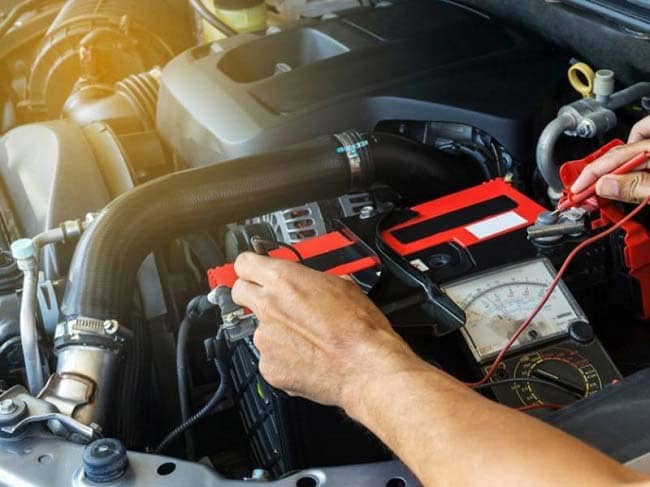
RV owners may occasionally face a discharged Recreational Vehicle battery or any energy source that gets quickly used up. It can limit the functionalities of the RV and ruin the promised hassle-free experience. Before getting much information on how you can charge the batteries of your RV from the vehicle, you must get familiarized with the vital battery information. Here, we discuss how to charge RV battery from my vehicle to get you back on the road.
To unleash the maximum potential of the batteries of your RV, its important features and characteristics must be known. With the help of a jumper cable, your vehicle can charge the RV battery.
The Guide to Charging RV Battery from Your Vehicle:
Firstly, check the battery connections for loose ones before making any attempts. A loose connection can make the batteries seem dead even though they have a full charge.
The next step to charge your RV battery includes parking your car alongside your RV and leaving the car running. The RV, however, should be turned off along with its accessories.
Now we can begin with the charging process of the RV battery. Take the caps of both the car battery and the RV battery off.
The red clamp of the jumper cables should be attached to the positive pole of the RV battery. Now, the other red clamp belongs to the positive pole of the car battery.
Afterward, the black clamp of the jumper cables should be attached to the negative pole of the car battery. Just like before, the other black clamp belongs to the battery of the RV. Be careful to save your face, as the clamp connection sometimes causes sparks.
Let your car start when the connections are finished. You have to wait until the RV battery has charged.
>> Check Out the Best Selling RV Batteries at Amazon <<
When the charging is completed, take the clamps out. The black clamp of the RV battery must be taken away first, then the one on the car’s battery. Follow the same process with the red clamps in the same order, and put the caps back on.
Now, you can enjoy the perks of having a charged RV battery.
How to Charge the Battery While Driving
The common question we face is the possibility of charging the RV battery while driving. The possible answer is yes to ease the curious minds of the newbie RV owners. Letting the battery charge go down too low permanently affects the battery’s ability to hold a charge. Acquaint yourself with the right method of RV battery charging for enjoyable road trips.
Step 1: The use of quality cables and plugs for connecting the battery and the charging source
Whether using separate batteries or a solar panel, you must connect them to the RV battery. Losses may occur, and it lowers the transfer rate efficiency from 100%. Using quality plugs and cables to form a stable connection can minimize the loss and reduce voltage loss greatly.
Step 2: The VCR disconnects automatically and parallels the batteries
Firstly, the Voltage Controlled Relay (VCR) organizes automatic disconnections and instant parallelization of the auxiliary and the start batteries. The batteries stay at a pre-set level, parallel, when the relay is closed. When the truck starts and keeps on running, the relay remains open. The trailer and truck batteries disconnect when the truck is turned off, and charging stops, putting the voltage to the pre-set level.
Step 3: The phase of charging
The vehicle’s power source also works like a battery. You can connect the RV battery with it or choose a 3-stage charger. Here, the charging will be completed through three phases of boosting, floating, and absorbing. However, only high-end plugs and cable applications are recommended when considering the vehicle’s power source. Because they are capable of carrying high-end energy, maximizing the charging process, and minimizing voltage drop with more reliable and stable connections with your RV battery. Carefully consider implying proper insulation from short circuits. A 50-amp automatic reset circuit breaker on the positive side eliminates possible fire hazards.
Better Treatment, Better Lifetime
Always adhere to the charging timeframes and avoid undercharging and overcharging. Charging the batteries in a rather hurried situation leads to the damaged battery. A digital voltmeter works great for monitoring the battery output. Be alert about charging batteries as soon as they reach 40% of available charge; consequently, draining completely damages the battery. A proper charging should ideally be completed in approximately 72 hours. Charging a single day only allows some fraction of stored power. Hot temperatures are also a certain factor in impacting battery life. The drying water level of the battery cell may be maintained when needed, use only distilled water. It should help keep your battery performing well, avoid overdoing, and ensure the battery compartment stays dry.
